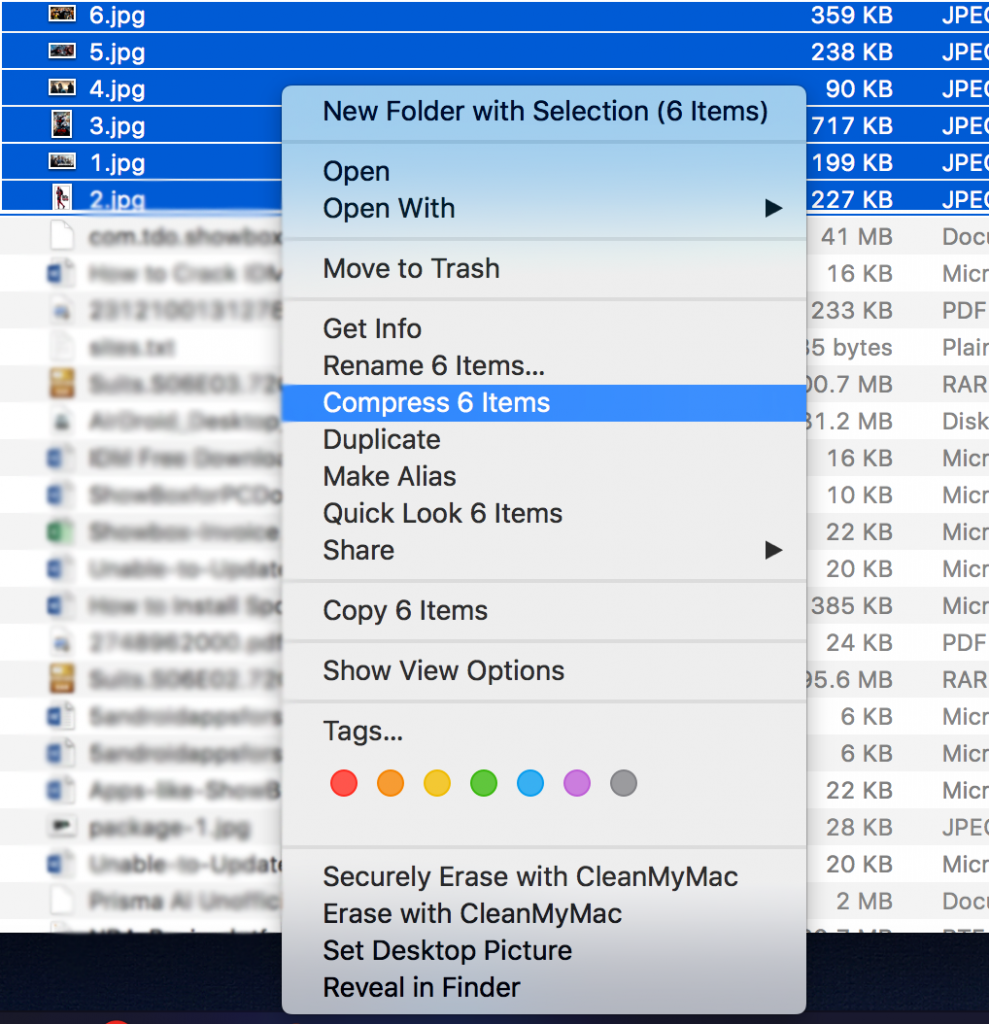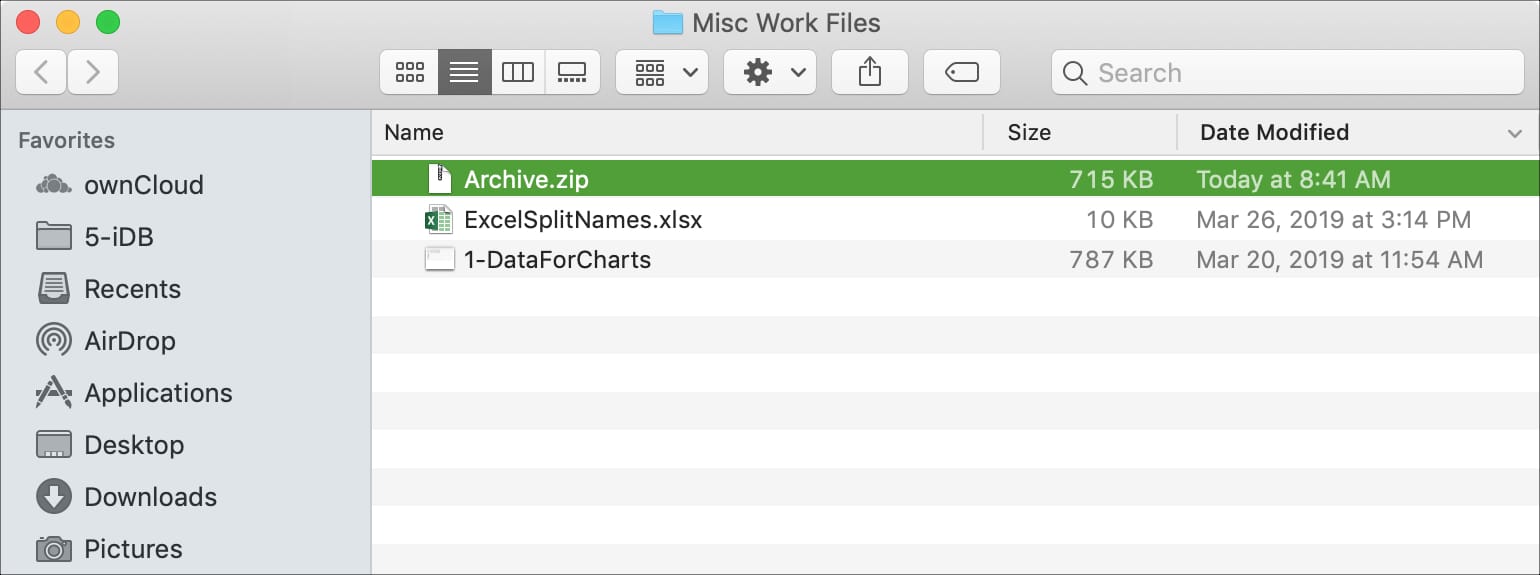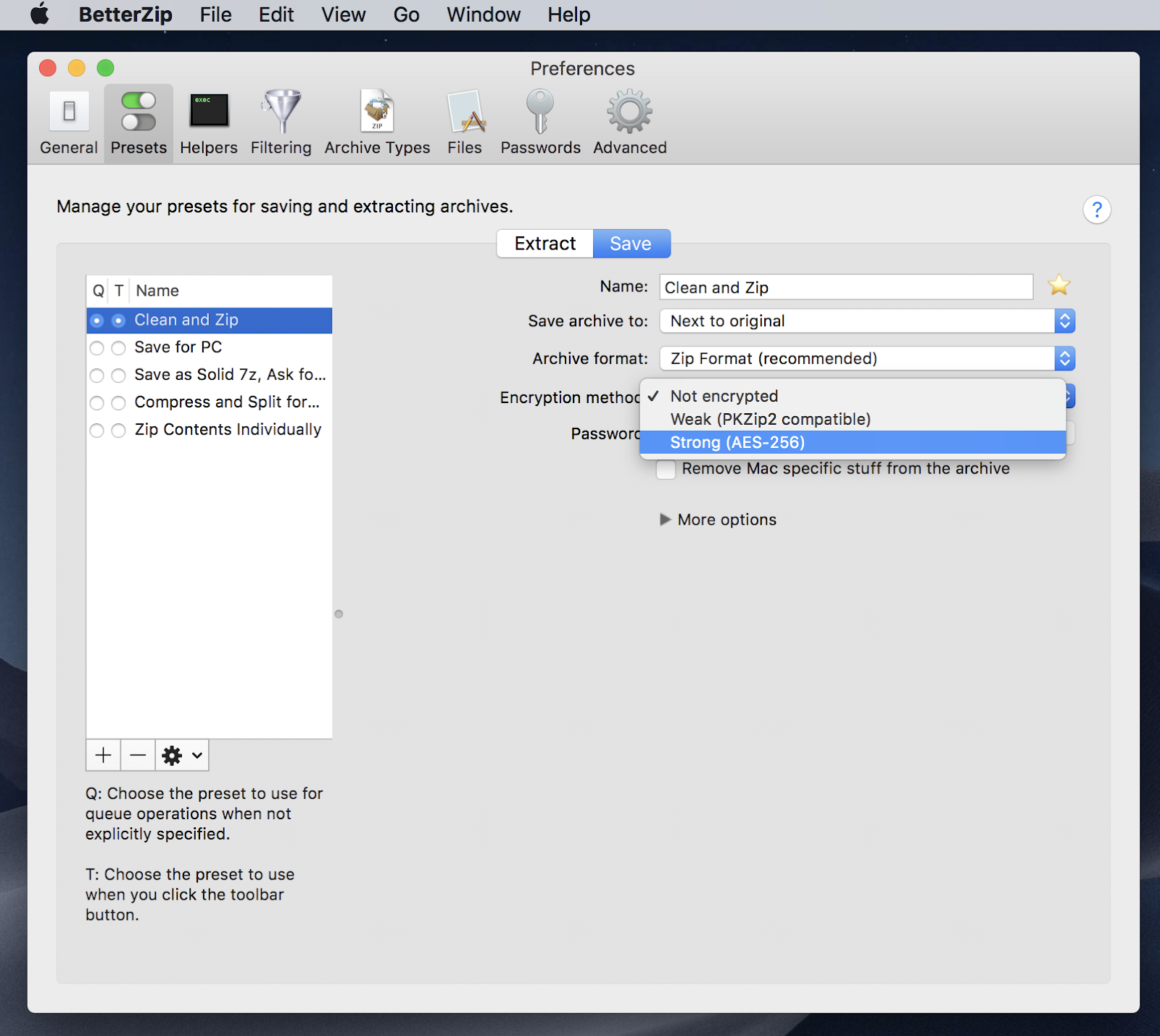Zip Files For The Mac
Get a secure archiver app
- Zip Files For The Mac Shortcut
- Zip Files For The Mac Free
- Mac Zip File Command
- Zip Files For The Mac File
Nov 05, 2017 The Unarchiver can open zip archives as well as open RAR files on a Mac, zip CPGZ files, bz2 bzip,.7z files,.sit, gzip gz, tar, and many other file archive formats that you may encounter when downloading data from the internet or in emails. That vast support for extracting a wide variety of file types is one of the many reasons why The. Apr 05, 2020 The download file is damaged – When you are downloading files in a browser on Mac OS, there’s a chance that the file might not be downloaded correctly and completely because of closing the websites before the downloading completion. Whenever this happens, you will be unable to open the zip file, even though the file might be present in. Jul 14, 2020 How do you open a zip file on a Mac? Choose the best solution to open and manage any file with the.zip extension on macOS, compress a file or folder on Mac easily - just follow the simple steps to ZIP and UNZIP your data. Follow these steps to open zip files on Mac: Click the Unzip button. From the drop down menu, choose to unzip your files to this Mac, iCloud Drive, Dropbox or Google Drive. A 'Finder style' window will open. You can browse to the folder where you want the files saved. Choose to unzip the Entire Zip file. Jan 10, 2012 Well, making a zip archive on a Mac is easy, and with the compression tools built directly into Mac OS X there is no need to download additional software or add-ons to quickly create zips and compress either a single file, a group of files, or an entire folder.
The allure of zipped files is simple: they allow you to directly send and receive files, or batches of files, without encroaching on file size limits. Often, email providers have limits on how large attachments can be. Zip files make it easy to bypass that limitation without sending multiple emails.
Zipping files can also be useful for compressing files for storage on your Mac, or an external hard drive.
All-in-one file management
Get 190+ apps to deal with your files in one Setapp suite. Zip and unzip files, edit and search PDFs, change file formats, and more.
How do you open a zip file on a Mac? Or what's the best way to do that? There are, of course, several methods for creating archives, such as built-in utilities, Terminal, and third-party apps. Below, we are going to explore how to unzip files on Mac, how to create zip archives, and showcase some archivers that make it really easy to zip and manage zipped files.
What is a Zip file?
A zip file is a lossless way to compress and archive files and folders. You often encounter zip files in emails, as mentioned, but also when downloading from the internet. If you've ever downloaded an app or extension directly from a developer website, chances are it was a zipped file.
It uses the '.zip' filename, and its icon is typically a folder with a zipper running up the middle. Zipping files is a time-tested method, and is largely unchanged. Its use-cases have expanded, though. We use zip files for sending large files and bundles of PDF or text files, but it's now used as a method to send large folders of images as well as for downloading applications or games from the internet.
How to zip files on a Mac
Before we talk about some special apps and tools, we need to mention built-in macOS's utility that allows you to compress and decompress files and folders. Your Mac's simple Archive Utility, stored in the Applications > Utilities folder, is a simple, direct way to zip files. Its functionality is limited, but it's a decent option for quick zipping and unzipping of files and folders when you need to open zip files someone has sent you.
Here's how to zip a file on Mac with the Archive Utility:
- Find the file or files you want to zip.
Note: if you'd like to zip multiple files, it's best to put those files in the same folder. Then you can proceed to step two. - Right-click on the file or folder.
- Select 'compress'
That's all it takes. Note the zipped file or folder will be created in the same location as the file or folder you zipped. You can move it manually if you like.
If you want to zip multiple files without first adding them to a folder, that's also possible with Archive Utility. Here's how:
- Open the folder with files or folders you want to zip up
- Select the items you want to include in the zip file and right-click on any one of the items.
- Select 'Compress (x) Items' from the pop-up menu.
Once again, a progress bar will display. When the compression is finished, zipped items will be stored in a file called Archive.zip, which will be located in the same folder as the original items.
How to create an encrypted zip archive
Now that you know how to create a zip file on Mac, you may be wondering how to encrypt that zipped file. Archive Utility doesn't allow for this, but you can use the Terminal to accomplish this feat. Here's how:
- Open 'Terminal' from your Applications
- Enter the following command: cd desktop
- Press enter on your Mac's keyboard
- Enter the following command: zip -e [zipped filename]
Note: Do not use brackets. If your filename were 'test.zip', you would enter: zip -e test.zip - Press enter
- Terminal will ask for you to assign and verify a password.

The encrypted file will then appear on your desktop. Opening it will require a password.
We should note this method is clunky, a bit confusing for many – and dealing with Terminal is always a bit nerve-wracking. There's a much better way!
Get BetterZip for all ZIP tasks
Zip Files For The Mac Shortcut
Create encrypted ZIP archives and handle compression effortlessly. BetterZip is part of Setapp, so it’s free to try for 7 days.
BetterZip is an app that makes compression and encryption a breeze. In fact, you can set BetterZip up to encrypt all files by default! It uses strong AES-256 encryption, and has the same lossless compression you'll find with any zipping method.
Here's how to encrypt zip files using BetterZip:
- Open BetterZip on your Mac.
- From the menu bar, select 'BetterZip,' and 'Preferences'
- From the 'Presets' menu, select the 'Save' menu
- Select 'Clean and Zip'
- Under 'Encryption method,' select 'Strong (AES-256)'
If you'd like to use the same password for every file you encrypt, you can enter it in the filed just below 'encryption method'. If you don't supply a password, BetterZip will prompt you for one each time you zip and encrypt a file.

BetterZip is impressive for encrypting every zip file you create. If you're looking for a simpler approach, Archiver is the app you're looking for. It uses a drag-and-drop interface, and makes encryption as easy as checking a box and assigning a password. Here's how:
- Open Archiver on your Mac
- Drag the file you want to zip into the app
- Select 'encrypt' if you want to secure the file with a password
- Enter and verify your password
- Select 'Archive'
How to add files to an existing zip file
BetterZip is your best path forward for adding files to an already zipped file. Here's how it's done:
- Open BetterZip on your Mac
- Select the zipped file you want to add new files to
- Select 'Add' from the top of the betterZip window
- Select the file or files you'd like to add to your already zipped file
Note: If you want to add multiple files, you can shift-click to add a list, or command-click to add them one at a time. - Select and hold 'Save' from the top left of the BetterZip window
- In the menu that appears, select 'Clean and Zip'
This creates a new .zip folder with the already-zipped file, as well as the files you added, all of which are now zipped in the same folder.
Unzip files on a Mac

Unzipping files on your Mac is simple. The best method is using the built-in Archive Utility app. The process is simple, and essentially a reversal of the process for zipping a file. Here's how to unzip files:
- Right-click the zipped folder or file you'd like to unzip
- Select 'open with'
- Select 'Archive Utility'
The zipped file or folder will be unzipped. If you'd like to re-zip the file, simple follow the steps we've outlined in this article to zip it again.
How to open zip files as a pro

To open zipped files and folders, both BetterZip and Archive are great options. We especially like BetterZip, here, because each zipped file or folder is previewed in the BetterZip window before you open it up. That way, you always know what you're about to open!
Here's how to unzip files using BetterZip.
- Open BetterZip
- Select the zipped file or folder you want to unzip
- Select 'Extract' from the top of the BetterZip window
Your file or folder will be unzipped.
Here's the method if you choose Archive:
- Open Archive on your Mac
- Select the zipped file or folder you want to unzip
- Drag it to the Archive window
- Select it from the menu
- Select 'Extract' from the bottom of the Archive window
That's all it takes!
Look inside the archive without extraction
Viewing a zipped file without actually unzipping it can be important if you have many zipped files on your computer, or have zipped folders and can't remember where you stuck a particular file.
For this, we like BetterZip. It automatically offers up a preview of zipped files and folders on the right side of its screen. There's no guessing, or fussy methodology. All you have to do is select the file in BetterZip, and the preview loads immediately.
Extract a separate file from a zip archive
Again, we really like BetterZip for this. Here's how to do it:
- Open BetterZip on your Mac
- Select the zipped folder with the file(s) you want to extract
- Right click the file you want to extract
- Select 'Extract Selected' from the drop-down menu
Unzip files and folders using Terminal
If you would rather unzip files using the Terminal, here's how to do it:
- Open Terminal on your Mac
- Change directory to where your zipped file or folder is located using the 'cd' command. (As an example, if your zipped file were in the documents folder, you would enter 'cd documents' into Terminal – without the quotations. Keep in mind if your zipped file is buried in another folder, you will have to change directory until you reach the file's location.)
- Enter the following command: unzip [filename]. (If your file were named zipped-stuff.zip, you would enter 'unzip zipped-stuff.zip' – again, no quotations.)
Meantime, prepare for all the awesome things you can do with Setapp.
Zip Files For The Mac Free
Read onSign Up
I will share a method to create a Zip file on Mac. Users can compress several files or folders together. I will also share a method to Unzip file or folder on Mac. You can also check the software and extract any .zip format file.
Mostly we use zip files to compress the data so that we can save the storage of our Laptop. We can send zip files via Gmail or Google Drive and etc. The best part is you can combine many files or folders and create a zip file on Mac. It will save the size and display space.
Contents
How to Create a Zip File on Mac With or Without any Software
We all want to reduce the storage on Mac as the storage is very less. To get more storage we need to spend more money. So the majority of the people buy Mac with less storage. Now to increase the space, we either need to delete files/folder or compress them. So compress is the best way as it even increases the storage size and we don’t need to remove the data.
Read more: Free Zip Software to Compress Files
How to Create a Zip File on Mac without Software
You wonder how to make a zip file in Mac. It is very easy to zip a file or a group of files of any format and we can even zip folders, using a simple command in the finder on your mac. You can even create a Zip file on Mac without using any external software.
Compressionof files or folders is very easy all you need to do is follow the below steps and create a Zip file on Mac.
- Choose a file or folder and right-click on it.
- Click on the option called “compress”.
- You will get the same file or folder name with a different format “.zip”
If you want to zip multiple files or folder on the Mac. Then you can select the files or folder and compress them all at once. You can even compress one by one or all at once.
Read more: How to Zip a File in Windows 10 Without any Software
How to Unzip the file
To unzip a file or folder on the Mac. All you need to do is tap on the zip file. It will automatically unzip the files or folder. The unzipped file will be on the same path with the same name. For example: If you unzip a file or folder on the desktop, then you will find the file there only.
How to Unzip a Zip File on Mac With Software
There are several softwares available on the Apple store. But they will not create a Zip file or folder. They will only extract the file. I am sharing the free software to retrieve a file from .zip.
- Go to the app store search “extractor”.
- Open the app and you will see a popup to drag archive.
- Now simple drag and drop the file inside the popup.
It will ask for permissions > give all permissions. - Select the destination where you want to unzip the file.
- Thats it! Your .zip file has been extracted.
Read more: How to Make a Folder on Mac
Mac Zip File Command
Conclusion
So how many of you know about this hidden method to create a Zip file? I am sure the majority don’t know about this method. Its always easy to create a Zip file on Mac. Mac is great and this inbuilt zip feature is an example. Users can add as many files they want and can compress the data. There is no software required to zip a file. Users can use this method to zipping or Unzip a file.
Zip Files For The Mac File
